Early Pregnancy Loss Provider Toolkit
Introduction
This toolkit is for health and service professionals who want to provide compassionate care for early pregnancy loss (EPL) patients and their families. It combines best practice guidelines, patient feedback, and practical experience, enabling staff to meet the cognitive, emotional, and physical needs of EPL patients. This toolkit was initially developed in the context of the emergency department, but can be adapted to any area of practice serving EPL patients.
Below, you will find three main sections of the toolkit:
- A coordinator checklist to guide you through initiating and maintaining EPL process changes in your area of practice, and to support you in adapting these resources to your unique context.
- Recommendations for staff education and resources, including a nursing care checklist, guidelines for when pregnancy loss occurs in the health care setting, and links to e-learning modules for compassionate care of the EPL patient.
- Recommendations for patient education and resources, including two patient information packages, discharge teaching guides, patient resources, and links to community organizations.
You can take these materials and make them your own, adding in any unique organization-specific policies and procedures, or any local resources you may have. If you have questions or need help, please connect with PAIL Network at pailnetwork@sunnybrook.ca. If you would like to have a sample toolkit mailed directly to you, please click here.
COORDINATOR CHECKLIST
Start here! This checklist is designed for health and service professionals wanting to implement resources for early pregnancy loss (EPL) in their area of practice, and who are initiating or coordinating the process changes.
This list provides an overview of implementation strategies and considerations as you adapt the resources and/or create your own.
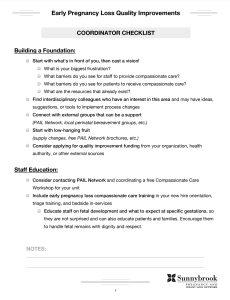
Supportive Workplace Changes
In situ resources and supplies can make providing compassionate care easier, so that these items are where staff need them. Some examples of easy-to-implement supportive changes could include:
- Create a single location (such as a binder) for all EPL-related documents, resources, and information packages. Having all your documents and resources in one place makes it easy for staff to find.
- Consider different sections for the nursing care checklist, patient handouts and discharge information packages, and considerations for management of products of conception. These staff and patient resources are all further detailed below.
- Here is an example:
- Create a cupboard where all EPL supplies are kept, such as maxi pads, mesh underwear, hospital pajama pants, a urine hat (Nun’s cap), blue pads, etc.
- Examples of locations could include:
- a gyne room cupboard or cart.
- a cupboard above an emergency triage desk so that nurses can provide supplies to patients as they are being triaged.
- Here is an example:
- Examples of locations could include:
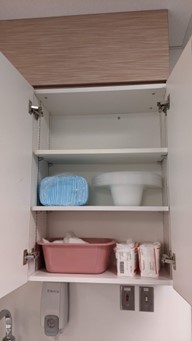
- Create a location for EPL staff supplies, such as a cart.
- Consider including all supplies needed for gyne exams, specimen collection, delivery, and management of products of conception.
- Here is an example:
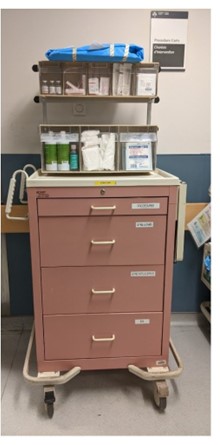
- Create a memory-making station for when a loss occurs. This station could include crib cards, memory boxes (including a blanket, baby hat, delivery announcement card, etc.), ink pads (for handprints and footprints), mementos (candles, bracelet charms, key chains, etc.) or other resources and supplies depending on local availability and preference.
- Here is an example:
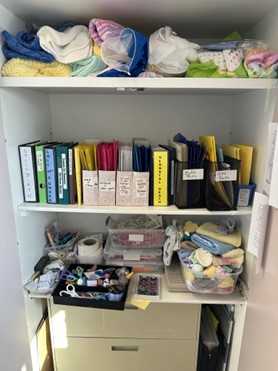
Downloadable Butterfly Image
The butterfly image is a commonly used symbol in the pregnancy and infant loss community. Please utilize this butterfly image in whatever way is helpful to you. Some suggestions:
- Placed on the outside door/curtain of a room, so everyone entering is aware of the loss
- Placed on the outside of a chart, so that everyone is aware of the loss (this can be for a current patient or a follow-up visit)
- Placed on the outside of your bereavement cupboard, for easy identification of supplies
STAFF EDUCATION AND RESOURCES
Nursing Care Checklist
The nursing care checklist is an evidence-based, comprehensive tool to guide staff through caring for a patient and family experiencing early pregnancy loss. It gives practical tips and strategies to improve compassionate care, from initial assessment to discharge. This checklist can be used with every patient who experiences early pregnancy complications to ensure the same standard of care. Edit this template to reflect your organization’s specific practices and guidelines.
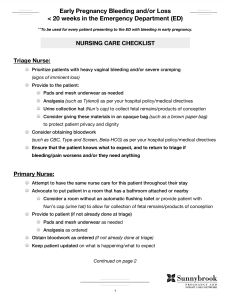
Management of Products Of Conception
The Management of Products of Conception (POC) < 20 weeks document is designed to support health and service providers when a miscarriage occurs in their unit or area of practice. This care checklist includes:
- Patient care considerations, such as communication tips, patient flow suggestions, and other compassionate care considerations.
- An example flowsheet for management, packaging, and transportation of POC. This flowsheet can be modified with your organization-specific packaging materials.
- A discharge pathway with teaching guides and suggested follow-up.
Edit this template to reflect your organization’s specific practices and guidelines.
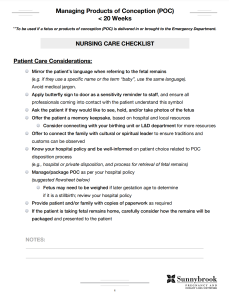
Staff Education
Compassionate care education and training for staff can improve their knowledge, skill, and confidence in working with those experiencing early pregnancy loss. We suggest including EPL training and education in your new hire orientation, triage training, and bedside in-services on a regular basis.
Comprehensive education should include physical care considerations, bereavement care considerations, and information needs of the patient and family experiencing early pregnancy loss; and communication strategies.
PAIL Network offers free in-person and virtual education for health and service professionals; please visit the education and e-learning page for current offerings.
Staff Communication Tool
This summary of communication strategies can help to guide staff when speaking with families experiencing pregnancy loss. We suggest including this tool with your other staff resources. Some suggestions:
– Taped inside your bereavement cupboard
– Laminated and placed inside your staff resource binder
– Included in a staff orientation resource package
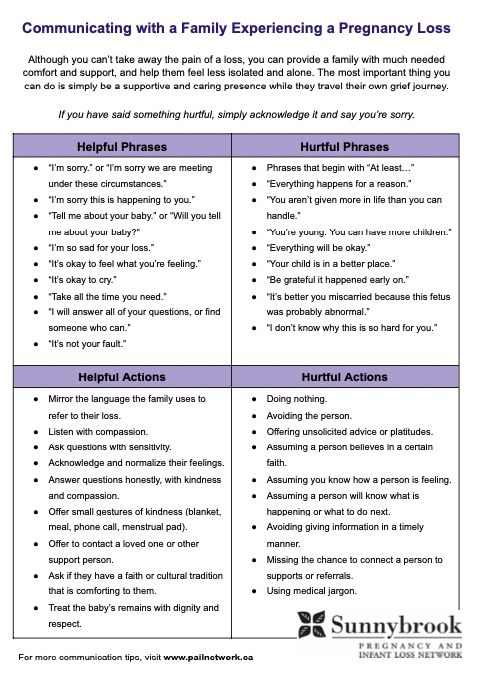
Download: (PDF)
PATIENT EDUCATION AND RESOURCES
Many patients present with bleeding in early pregnancy, and as there are various causes, some patients will go on to have a normal pregnancy, while others may have a miscarriage. Due to this uncertainty, we suggest having two different discharge information packages: one package for patients with a threatened miscarriage (but still not confirmed), and a separate package for patients who have a confirmed miscarriage.
Bleeding In Early Pregnancy Patient Information Package
Below are recommendations to create an information package for patients who are discharged with a threatened miscarriage.
Recommended Contents:
- Bleeding in Early Pregnancy Patient Handout (see thumbnail below)
- This patient handout discusses the potential causes of bleeding in early pregnancy, next steps, and red flags to return to the emergency department. Download below and edit this template to reflect your organization’s specific practices and guidelines.
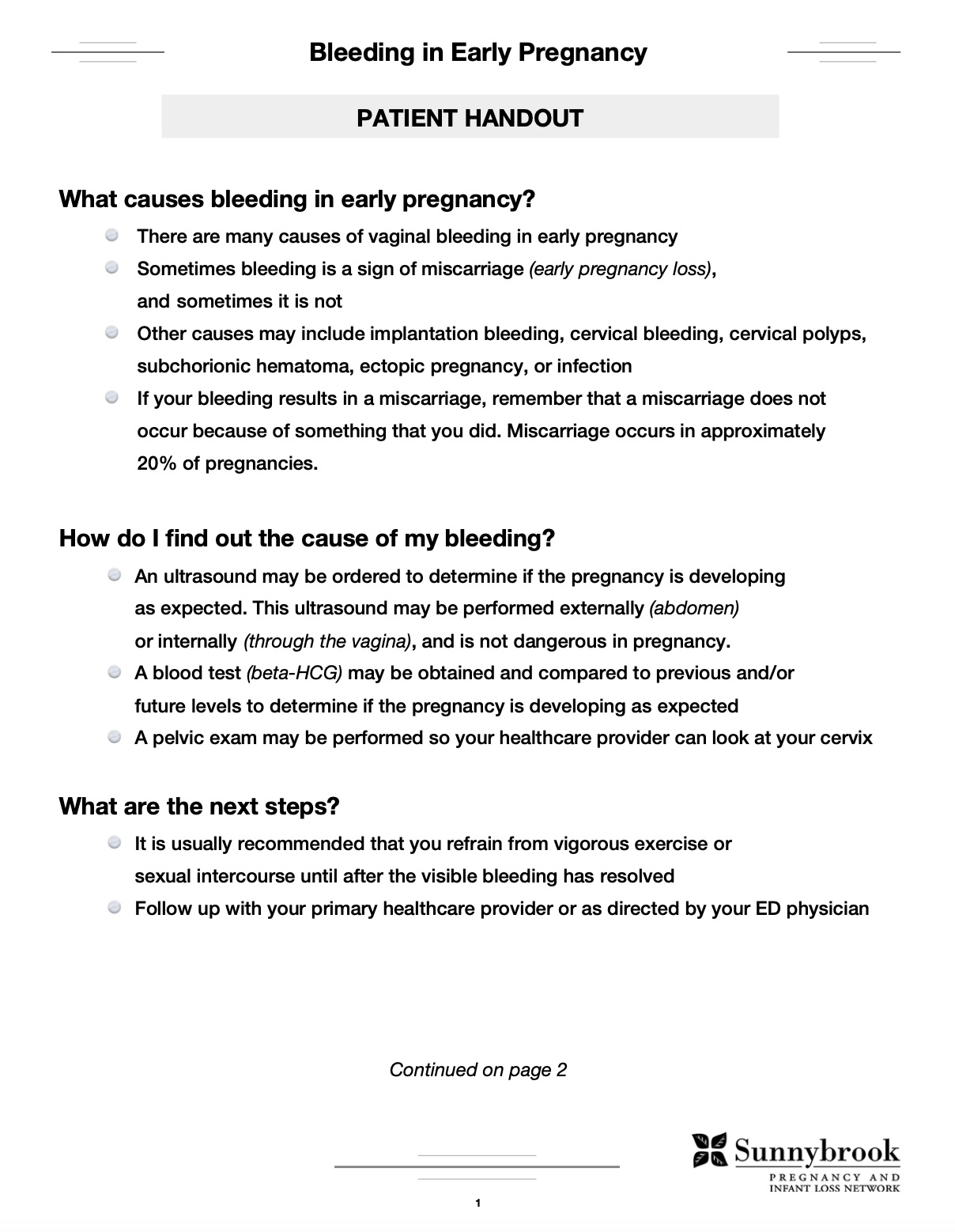
- Free PAIL brochure (link to order free brochures).
We also recommend including any organization-specific outpatient follow-up information, such as a referral to your local early pregnancy evaluation clinic, recurrent loss clinic, and/or social work referral.
Early Pregnancy Loss Patient Information Package
Recommended Contents:
- Discharge Teaching for Patients Experiencing Early Pregnancy Loss: Patient Instruction Handout (see thumbnail below)
- Includes physical and mental health care considerations including red flags to return to the emergency department.
- PAIL Network Booklet – “Miscarriage Before 20 Weeks” and/or free PAIL brochure (both available in the PAIL Network Resource Library)
- Resources for Patients and Families Experiencing an Early Pregnancy Loss (see thumbnail below)
- This is a fillable form where you can add organizations in your community that support families who experience EPL. It also is pre-filled with Ontario and Canadian-based resources.
We recommend including organization-specific and community-specific follow-up information such as an early pregnancy evaluation clinic, recurrent loss clinic, counseling in your community, social work referral, bereavement ceremonies, etc.
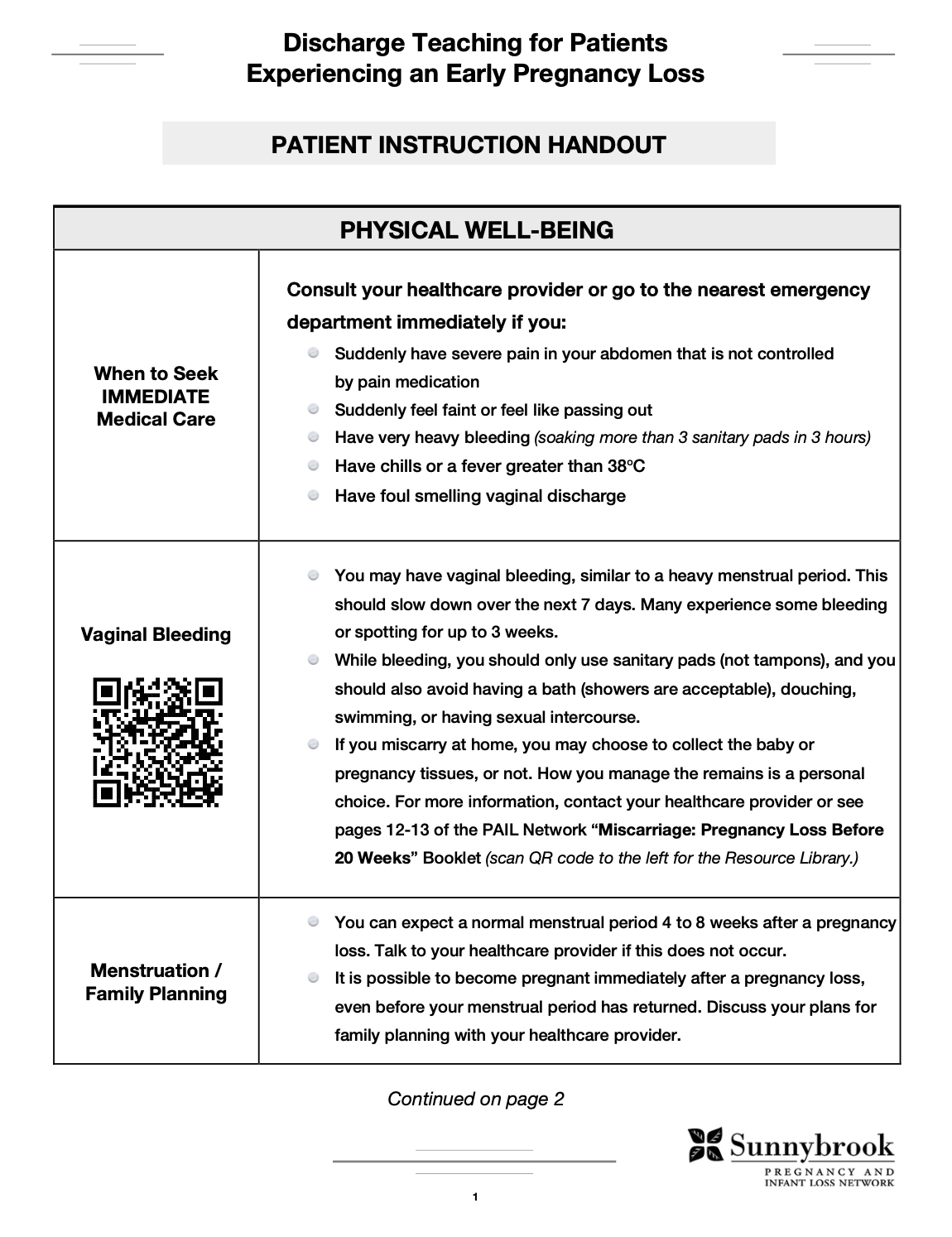
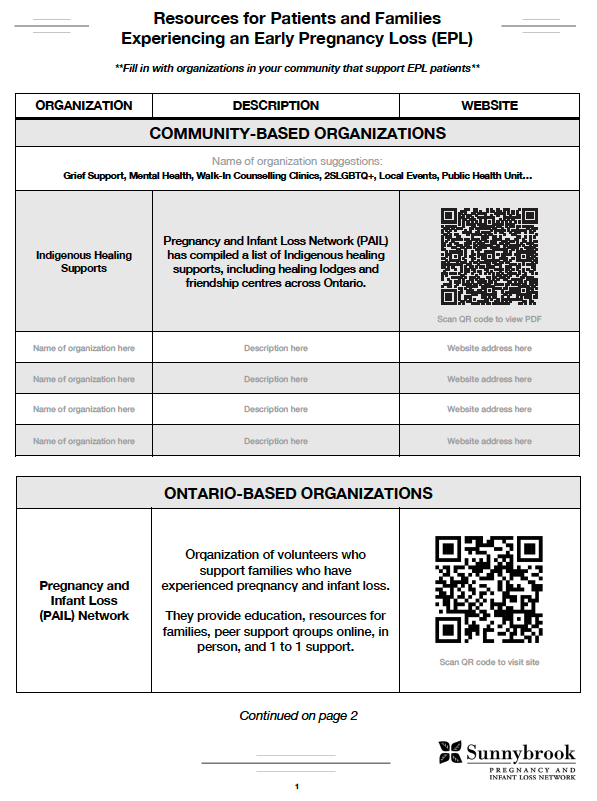
Edit these templates to reflect your organization’s specific practices and guidelines.



